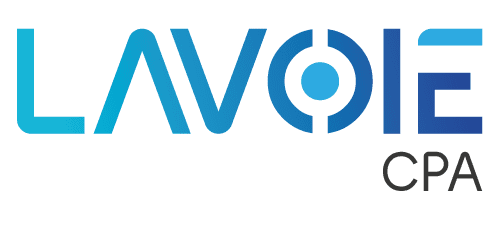
by Sharai Lavoie | Sep 24, 2025 | Accounting, Big Data, Uncategorized
As a growing business, you rely on up-to-date financial information to make strategic decisions, but without the right structure in place, even the most detailed numbers can feel like guesswork. If your Chart of Accounts is cluttered or your reporting lacks the depth you need, you’ll struggle to answer questions like “Which product line drives our margins?” or “How did that marketing campaign impact revenue by region?”
Fortunately, by thoughtfully designing your Chart of Accounts and layering on reporting dimensions, you can transform raw data into meaningful insights, creating a financial framework that grows with you.
1. The Role of Your Chart of Accounts
The Chart of Accounts is the structural framework that categorizes every transaction within your accounting system. An optimized CoA should:
- Group similar accounts: Avoid dozens of minor variations by consolidating them under clear categories (e.g., “Advertising and Marketing Expenses” rather than separate accounts for each campaign tool).
- Support consistency: Use clear naming conventions and numbering to ensure every team member records transactions uniformly.
- Reduce clutter: Revenue, expense, assets, and liability accounts should be aggregated as best as possible so that immaterial transactions are not standing alone in their own accounts.
- Design for permanence: Because accounts with activity can’t simply be deleted without affecting history, plan ahead for roll-ups and consolidations. When change is needed, deactivate the account and reclassify past entries to maintain historical integrity.
When your CoA is organized, analyzing financial results, especially when comparing to budgets and forecasts, should be seamless and efficient for reporting to management, investors, and third-party stakeholders.
2. Introducing Reporting Dimensions
Standard accounts tell you what happened; dimensions tell you where, why, and how much across multiple perspectives. Dimensions work like tags that can be attached to any transaction, such as:
- Department (e.g., Sales, R&D)
- Location (e.g., North America, EMEA)
- Project or Job (e.g., Project Alpha, Client Engagement)
- Product Line (e.g., Subscription, Professional Services)
These dimensions allow you to analyze the income statement, balance sheet, and cash flow data in countless ways, without adding to your CoA. High-quality accounting systems can handle multiple dimensions and provide tools for instantly reporting dimensional financial data.
Important: To keep reports comparable over time, make dimension coding mandatory for every transaction and keep the taxonomy intentionally simple (fewer, well-defined values reduce mis-coding and friction for users).
3. Key Benefits of Dimensions
Real-time visibility
Instantly view revenue and expense trends by any combination of dimensions.
Budget vs actual comparability / Transparent reporting
Forecast models should align with the accounting CoA so that analyzing and reporting variances is fast and efficient. For instance, budgets should compute payroll expense by department, which should align with the actual payroll expenses that are reported monthly from the accounting system. This alignment allows for effective analysis of variances.
Driver-based forecasting
Link key business drivers (like headcount or memberships) to dimensions, and build forecasts that align with the underlying assumptions.
Scenario analysis
Model “what-if” scenarios (for example, the impact of headcount changes in the Sales department and expected impact on revenue and cost of acquiring customers (CAC)) and see immediate impact of the forecast/ budget.
Scalability
Add new dimensions as your business grows, new products, regions, or programs, without overhauling your account structure.
4. Implementing Your CoA & Dimension Strategy
Step 1: Organize and Simplify Your CoA
- Review existing accounts: merge or retire duplicates.
- Use standardized account numbering (e.g., Assets 1000 – 1999, Liabilities 2000 – 2999).
- Include gaps in the numbers for future expansion of the chart of accounts when needed.
- Plan for change without breaking history: If you retire or consolidate accounts that already have posted activity, set them to inactive and reclassify historical transactions rather than deleting.
Step 2: Define Critical Dimensions
- Engage department heads to identify the 4–6 dimensions that drive strategic insight.
- Document tagging rules and default values to ensure consistency.
- Require coding on every transaction: Establish which dimensions are mandatory across transaction types; provide defaults where appropriate, and define QA checks to prevent un-coded entries.
Step 3: Configure Sage Intacct
- Enable selected dimensions in system settings.
- Designate required dimensions for specific transaction types and enforce posting controls so entries can’t be saved without the right codes.
- Train finance and operations teams on proper tagging procedures and ensure integrations also pass required dimension values.
Step 4: Build Dynamic Dashboards and Reports
- Use Sage Intacct’s Report Writer to create P&L and balance sheet views by dimension.
- Set up real-time dashboards in Intacct’s Home dashboard for executive visibility.
5. From Data to Decision-Making
Once configured, your CoA and dimensions become the backbone of strategic finance:
- Empower leaders with tailored reports by region, product, or project, without waiting for monthly close.
- Align budgets and actuals seamlessly, enabling proactive adjustments.
- Tell a compelling story around performance, backing every recommendation with precise, dimension-driven data.
6. Other Reminders
- COA decisions are durable. Once an account has posted transactions, it cannot be cleanly removed. If you need to retire or consolidate it, mark it inactive and reclassify historical transactions to preserve accurate reporting.
- Dimensions require discipline. When you introduce dimensions, every transaction must be coded with the required values. Keep the dimension set intentional and simple so coding stays consistent and reporting remains clear.
A well-structured Chart of Accounts combined with Sage Intacct’s reporting dimensions transforms raw numbers into actionable intelligence. By implementing this framework, you’ll accelerate close processes, deepen financial insights, and equip your organization to respond swiftly to change.
Start the conversation.

by Sharai Lavoie | Jul 15, 2025 | Uncategorized
If you’re preparing to sell your company, the groundwork you lay before the deal closes can impact the valuation and the success of the sale transaction. Particularly as it relates to private equity acquisitions, the sellers who command the highest multiples are the ones who are “platform companies” that are ready for growth and expansion.
Your accounting readiness requires having an infrastructure that can handle acquisitions, sales growth, and new customers, while also ensuring timely and accurate financial reporting.
At Lavoie CPA, we help business owners set the stage for success by building the systems, processes, and insights that private equity buyers value most. When you invest in scalable accounting solutions before you go to market, you’re showing buyers that your company is ready to lead, expand, and become the core of their future acquisitions.
Why A Solid Foundation Can Attain a Higher Valuation
A “platform company” provides the foundation for future acquisitions. Thus, any subsequent acquisitions will “bolt-on” to the platform company and oftentimes depend on the platform company’s infrastructure and systems as the combined companies integrate together.
From the lens of the private equity firm, the platforms consistently command higher valuations than bolt-ons because the former already have the infrastructure to support growth.
Our most forward-thinking clients understand that strong accounting processes are not just a box to check; they are the engine behind sustainable scale. By having the right systems in place before going to market, these companies position themselves for a smoother due diligence process, rapid expansion, and seamless integration with new acquisitions.
Consider this:
Hypothetically, if platform companies can achieve a valuation of 5-6x EBITDA, it would not be unusual to see bolt-on acquisitions attain multiples of 3-4x EBITDA. That 2x difference can mean millions of dollars in additional value for the seller.
The Real ROI: A Practical Example
Let’s say your company generates $8 million in annual EBITDA. You’re preparing for a private equity sale, and you know the market pays a premium for platforms.
- Platform acquisition: 6x EBITDA = $48 million valuation
- Add-on acquisition: 4x EBITDA = $32 million valuation
That’s a $16 million difference, just for having the right infrastructure in place.
Now, what does it cost to get there? If implementing and maintaining a best-in-class accounting system costs $250,000, your return on that investment is 64x. By investing in your accounting foundation up front, you don’t just make life easier for your team; you create tangible, outsized value that private equity buyers are actively seeking.
Beyond Due Diligence: Integration Drives Success
“Start the way you want to finish.”
These words shape how we work with our clients at Lavoie CPA. The most successful transactions are planned from the beginning with the end goal in mind. That means looking past the standard diligence checklist and considering the post-acquisition journey from day one.
We’ve seen acquisitions fail to deliver their promise when integration and system upgrades are treated as afterthoughts. On the other hand, our clients who prioritize scalable infrastructure and integration planning are rewarded with:
- Faster, more efficient due diligence processes
- Higher confidence and smoother transitions for management teams
- Reliable, actionable data for decision-making and reporting
- A reputation as a true “platform company” that investors trust
When you anticipate the need for stronger accounting processes, you can even negotiate improvements as part of the purchase price, or ensure the seller bears the cost of system upgrades. Either way, you control the process and maximize your ROI.
How to Build a Platform Company That Attracts Top Private Equity Buyers
The companies that stand out in today’s market are the ones that take action before the deal is even on the table. Here’s how you can position your business as the platform investors are looking for:
- Upgrade Your Accounting Infrastructure Early: Move beyond basic bookkeeping. Invest in a modern, cloud-based accounting system that can easily scale as your company grows and can support integrations with future acquisitions.
- Deliver Decision-Ready Reporting: Set up automated dashboards and real-time reports that offer clear, actionable insights, not just historical numbers. This gives investors immediate confidence in your data and your management.
- Design for Integration and Growth: Build processes and systems that don’t just work for your current operations, but are robust enough to absorb bolt-on acquisitions without missing a beat. Demonstrate that you’re already thinking ahead to the next phase of growth.
- Align Leadership and Teams for Expansion: Make sure your leadership team is prepared to manage change and scale. Encourage a mindset that prioritizes long-term vision, operational discipline, and readiness for the next opportunity.
By having this foundation in place before approaching the market, you’re not just preparing for due diligence, you’re proving that your company can lead, scale, and deliver real value to private equity partners from day one.
Ready to Build the Platform That Drive Financial Results
At Lavoie CPA, we help clients achieve their vision by designing financial infrastructures that drive value and growth, long before the deal is signed. If you’re ready to start where you want to finish, let’s work together to build your next level of greatness.
Start the conversation with Lavoie CPA today and discover how to elevate your readiness for due diligence, acquisitions and integration, and long-term value.

by Sharai Lavoie | Nov 25, 2024 | Uncategorized
Introduction
As your software company grows, the financial tools that once served you well may instead start to hinder you. From clunky manual billing processes to delayed reporting, tools that work well for small businesses can quickly lose their luster.
At Lavoie CPA, we’ve guided many software companies through this critical transition. We’ve helped companies move from basic accounting software like QuickBooks to more robust solutions like Sage Intacct. Below, we discuss five clear signs that it might be time for your company to make this switch.
Manual Billing Processes
Are you spending hours manually creating invoices or re-entering data from Salesforce into QuickBooks? Not only does this time-consuming process slow down your cash flow, but it can also increase the risk of making errors.
As your customer base grows, manual billing becomes increasingly unsustainable. It’s not just about the time spent, but about the opportunity cost of what your finance team could be doing instead of manual data entry.
Inflexible Billing Options
In today’s dynamic software market, your company’s growth hinges on its ability to offer varied pricing models. If QuickBooks won’t let you implement subscription-based, usage-based, or other innovative pricing structures, you’re missing significant growth opportunities. Modern customers expect flexible options—your billing system should support this, not hinder it.
Spreadsheet-Based Revenue Recognition
With the complexities of ASC 606, it’s no longer feasible for growing software company accounting teams to manage revenue recognition in spreadsheets. Not only is this manual entry time-consuming, but it’s also prone to errors and makes audit preparations a nightmare. If your best team members spend a disproportionate amount of their time on manual calculations, it’s a clear sign you need a stronger solution. Automated revenue recognition isn’t just a luxury—it’s a necessity for scaling software companies.
Delayed Reporting
Are you pulling all-nighters to prepare reports for investors or your board? Delayed financial closes and manual report preparation drain your resources and obstruct timely decision-making. In the fast-paced software industry, having real-time insights into your financial performance can be the difference between seizing an opportunity or missing out. If you only have access to outdated financial information, you’re ill-equipped to make the best decisions for your company’s future.
Challenging Forecasts
For software companies, being able to accurately predict cash flow, revenue, and growth is vital for strategic planning and investor relations. If you’re struggling to create reliable forecasts, it’s time to consider an upgrade. Accurate forecasting isn’t just about predicting the future; it’s also about understanding the levers that drive your business and being able to quickly and accurately model different scenarios.
How Lavoie CPA and Sage Intacct Address These Challenges
At Lavoie CPA, we specialize in implementing Sage Intacct to address the pain points discussed above.
- We integrate your quote-to-cash processes, eliminating manual data entry and reducing errors. This integration can speed up your billing cycles by 30-60%.
- We enable flexible, contract-based billing to support innovative pricing models, letting you experiment with pricing strategies that can drive growth.
- We automate revenue recognition, ensuring you’re ASC 606 compliant without the spreadsheet headaches. This not only saves time but also provides peace of mind during audits.
- We set up real-time GAAP reporting and SaaS metrics, providing instant insights into your business performance. This allows for more agile decision-making and more productive board meetings.
- We improve your forecasting capabilities, enabling you to make data-driven strategic decisions. With Sage Intacct, you can easily model different scenarios and understand the potential impact of each.
Benefits of Upgrading from QuickBooks
Companies that make the switch typically see:
- 30-60% faster quote-to-cash cycles, reducing DSO.
- 20% improvement in cash flow, freeing up resources for strategic investments.
- 30-75% shorter financial close periods, allowing finance teams to focus on analysis instead of data gathering.
- More accurate forecasting, leading to better strategic decision-making and improved investor relations.
- Scalability that supports business growth without the need to grow your finance team.
Position Your Company for Success
If your software company has begun to outgrow its spreadsheet-based billing and reporting tools, it’s time to consider a more robust financial management solution. The transition from QuickBooks to a system like Sage Intacct isn’t just about handling current challenges; it’s also about positioning your company for future growth and success.
At Lavoie CPA, we have the expertise to guide you through this transition. We understand the unique challenges of the software industry and can help tailor our implementation of Sage Intacct to your company’s specific needs.
Don’t let outdated financial systems delay your growth. Start the conversation with Lavoie CPA today to learn how we can help you implement Sage Intacct to overcome these challenges and position your company for future success. Let’s work together to transform your financial operations from a bottleneck to a strategic asset.

by Sharai Lavoie | Nov 20, 2024 | Intacct, Uncategorized
Multi-entity healthcare organizations face major challenges when they consolidate their finances. Lavoie CPA understands these complexities and offers a powerful solution: Sage Intacct implementation.
The Challenge for Multi-Entity Healthcare Organizations
Consolidations create a unified view of your organization’s financial health. Whether you’re managing a multi-practice clinic, long-term care providers, or a hospital network, you must ensure that all stakeholders clearly understand your organization’s business lines so they can make informed decisions. But when you’re dealing with so many moving parts, it’s even more challenging to quickly give a 10,000-foot view.
The healthcare industry’s evolving landscape complicates the consolidation process:
- Expansion across regions and states
- Changing accounting rules and regulatory frameworks
- Growth through new ventures and acquisitions
- Increasing inter-company activities
Instead of managing a small slice of one pie, you instead find yourself managing the entire bakery.
The Traditional Consolidation Process: A Time-Consuming Approach
Many healthcare organizations rely on a traditional consolidation process that’s both time-consuming and prone to errors. This typically involves:
- Waiting for each business unit to close their books
- Manually collecting and harmonizing data from various sources
- Making consolidation and elimination entries
- Manipulating consolidated accounts for financial reporting
This approach often leads to delays, errors, and a lack of real-time visibility into your organization’s financial status.
The Next Generation of Consolidations: Sage Intacct
At Lavoie CPA, we recommend Sage Intacct as a solution to the consolidation challenges so many organizations face. Sage’s cloud-based financial management system offers four critical advantages:
- Scalable Accounting Foundation: This lets you add new entities without requiring you to invest in any extra hardware or software.
- Faster Growth Support: Quickly set up new entities with your existing business models and practices.
- Streamlined Consolidation Process: Access real-time data from all your organization’s entities, automate eliminations, and reconcile intercompany accounts.
- Enhanced Insight: Gain real-time visibility into consolidated financial information for faster, more informed decision-making.
How Lavoie CPA Can Help
As experienced Sage Intacct implementers, Lavoie CPA can help your healthcare accounting team in several respects.
First, we’ll work with you to transition to this cloud-based solution. We can customize the system to meet your specific needs and ensure it’s capturing all the information it needs.
We can also train your team to maximize Sage Intacct’s benefits. Once your team knows everything Sage Intacct can do, they can hit the ground running to gather data and find new solutions for challenges your organization faces. And we’ll provide ongoing support and optimization, troubleshooting wherever needed and making sure this system is working for you.
By partnering with Lavoie CPA to implement Sage Intacct, your multi-entity healthcare organization can:
- Accelerate the integration of new entities
- Improve control and centralize core financial processes
- Gain drill-down insight from consolidated views into each operating entity
- Enhance coordination throughout the closing process
- Access real-time consolidated results at any time
By automating and streamlining your consolidation process with Sage Intacct—implemented by Lavoie CPA—you can transform your organization’s financial management from a time-consuming task to a valuable strategic asset.
Ready to improve your multi-entity healthcare organization’s financial consolidations? Start the conversation with Lavoie CPA today to learn how we can help you implement Sage Intacct and enhance your financial management.




